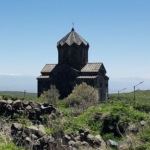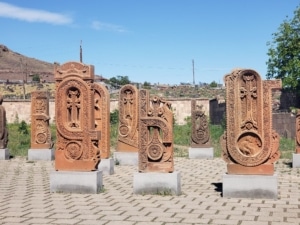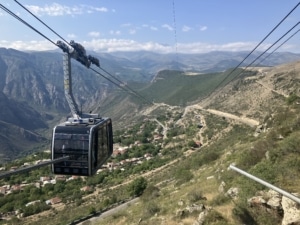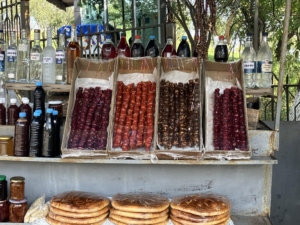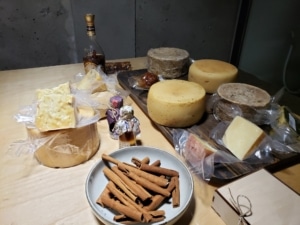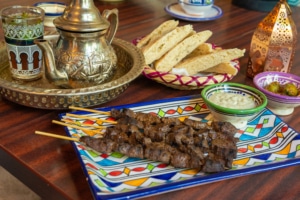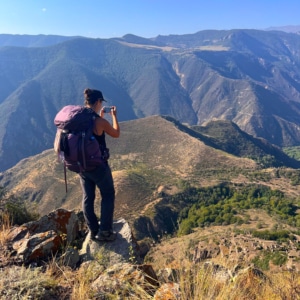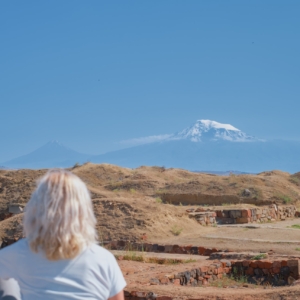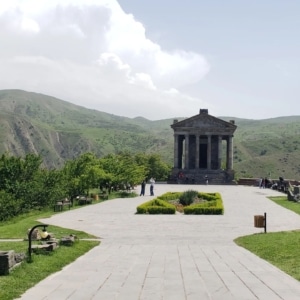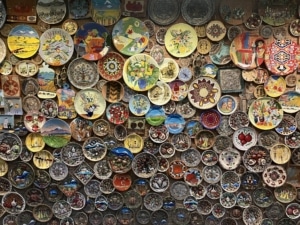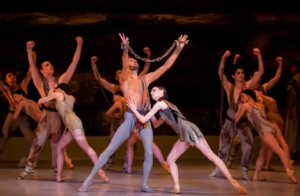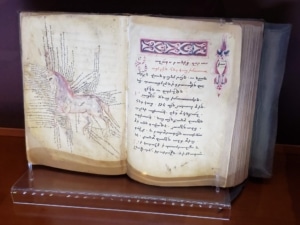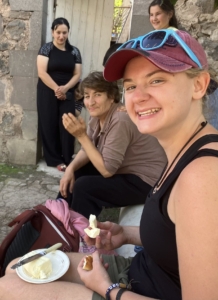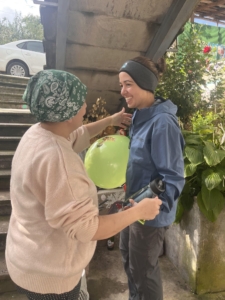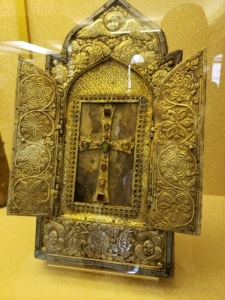Since spring of 2022, Russian language study abroad has moved to three regions – Central Asia, the Caucasus, and the Baltics. Different factors/characteristics seem to drive students to these regions. In this post, I’m going to explore the draw to the Caucasus and specifically, Yerevan.
I will start with Georgia as a more familiar “reference point” for many. Despite perhaps being the least immersive option for Russian language study, students love it. Understandable. I do too. Great food, landscape, music, and more. If you ask your professor/advisor about Georgia, most likely you will get an immediate smile as they think about khachapuri. Even if they’ve never been there, they, like many of us, “experienced” Georgia in the Georgian restaurants in Russia and elsewhere. To top it all off, Georgia is a new darling of the tourism industry, the country has been very proactive in messaging, tourism infrastructure is growing rapidly, and ultimately Georgia is making the “lists” of places to see and experience. It is not so “undiscovered” anymore.
The untold story is Armenia – Georgia’s neighbor to the south. It is just a little over an hour drive from Tbilisi to the border. You are still in the region and yet just a few days there and you understand you are in a different place altogether. It’s intriguing, you can’t quite put your finger on it. There are similarities, some shared history and friendly rivalries with Georgia, yes, but it’s different. The incredibly strong collective identity of the people is where it starts and how that distinctly manifests itself in the country is what’s special.
I have had many conversations with colleagues, students, and others who have had the opportunity to visit Armenia in which we try to better “define” it as a destination. There is a sort of unspoken “you just feel it, you can’t exactly describe it.” What I can do is highlight some of the key features of Armenia that make it so appealing.
Food. Influences on Armenian cuisine are Turkish, Lebanese, Greek, Russian, and Iranian. Healthy – and there are plenty of options for vegetarians and vegans. Personally, I love the dolma – especially the vegetarian version. For lots more on Armenian food and folk culture, you can click here.
Wine. There is an ongoing friendly battle between Georgia and Armenia as to where the first evidence of wine-making was found. All of that is rather irrelevant. Excellent wine to be found in both countries. I know, not a primary topic for study abroad, but it is what it is – part of the culture. Saryan Street in Yerevan is home to many wine bars – including one that has the awesome vegetarian dolma.
Landscape. Armenia has dramatic landscapes. Many residents in Yerevan have a view of Mt. Ararat from their window. (If they don’t, they hang a picture of it.) That is just the beginning though. There are a lot of monasteries in Armenia. Whether you are a fan of visiting monasteries or churches doesn’t matter – after visiting just a few, you realize they are sitting on some of the most spectacular real estate in the world. You sense deeply the connection between history, religion, and nature.
History and geography. A constant thought I had after visiting Armenia was that it represented a gaping hole in my understanding of history, and even geography. The many monasteries stand testament to this ancient and complex history, having served as centers of not only religion, but also science, astronomy, philosophy, education, and more. Armenia was the first country to adopt Christianity – and yet you can step back to the pre-Christian era with a visit to Garni Temple. As it does everywhere, geography shapes history in Armenia. Consider the surrounding countries and their cultural and historical influences. Geopolitics of the region – nothing short of fascinating.
Culture scene. Yerevan is a city of culture. There are excellent museums. My personal favorites are the Matenadaran Ancient Manuscript Museum and the Sergei Parajanov Museum, but there are plenty of other museums to help you understand the complex history of Armenia. And for performance art – the Royal Opera House sets the tone. A must during any stay in Yerevan. You can see a lot more cultural attractions detailed on our site MuseumStudiesAbroad.org. There are many other concert halls, jazz clubs, and other live music venues.
Ability to use Russian. The default second language in Armenia is Russian – not English. This is not to say there are not English speakers or that everybody, especially all young people, speaks Russian. In Armenia it is perfectly fine to “assume” Russian until you are told otherwise.
Atmosphere. While Yerevan is heralded as one of the oldest (living) cities in the world, it does not strike you that way in the least. Certainly it is not modern in the sense of glass skyscrapers, but it has more the feel of a young city full of restaurants, wine bars, jazz clubs, shopping, and more.
Chess. How can there not be something unique about a country that has mandatory chess instruction built into the national curriculum?
The people. There is a very strong sense of Armenian identity. This extends to the very large and influential diaspora, which is often involved in funding very interesting development projects in Armenia. They truly want you to understand their country and people. You will be struck by incredible hospitality and kindness and interactions that draw you into deep relationships and conversations. As a friend traveling with me commented when we tried to identify what was so special about our guide: “She didn’t show us the country, she shared it with us.”
Armenia is still undiscovered. That will change.
